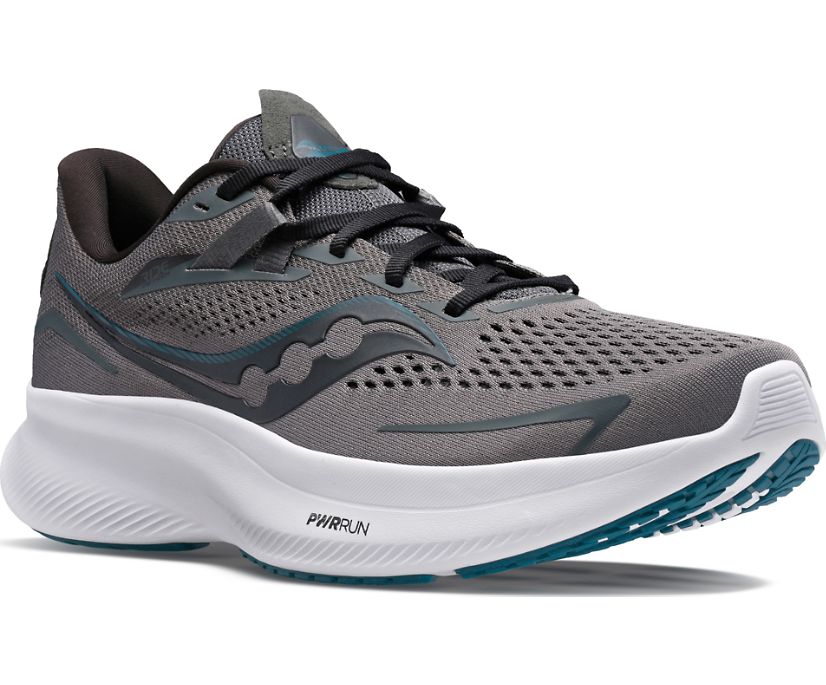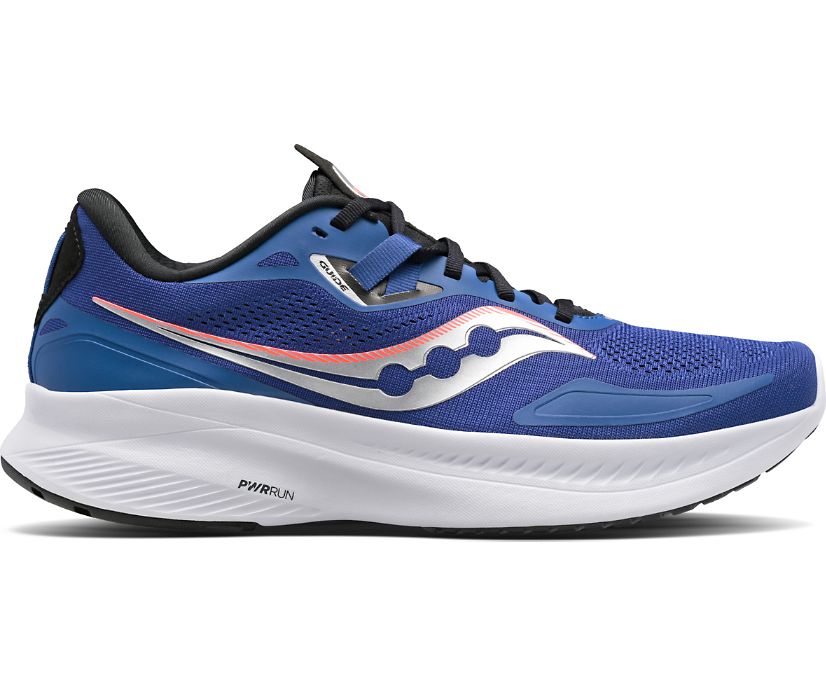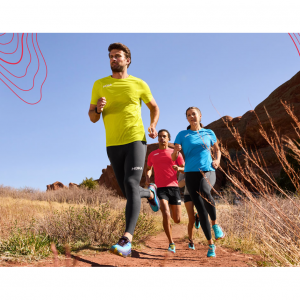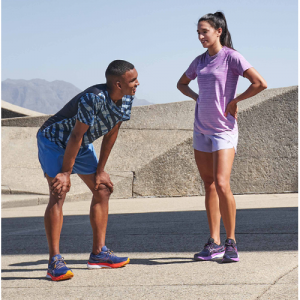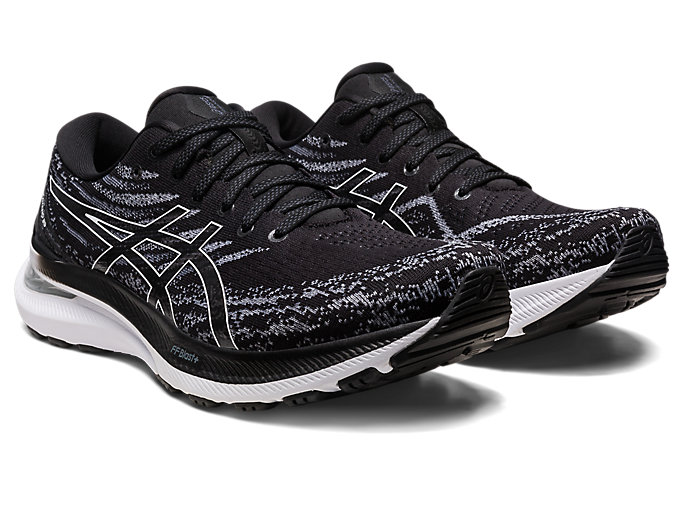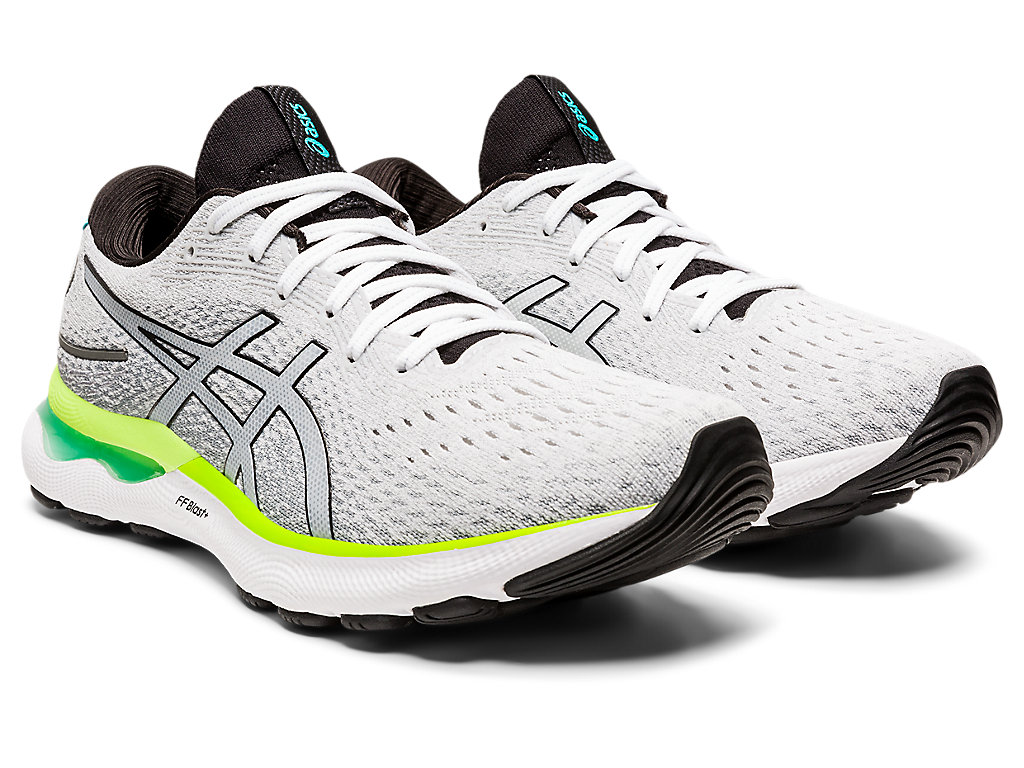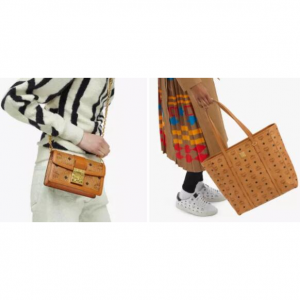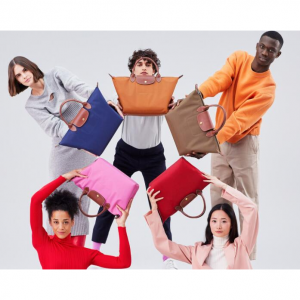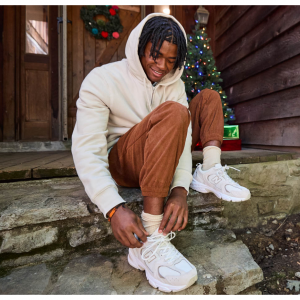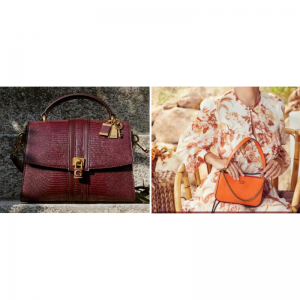
Saucony vs. Hoka vs. Asics vs. Mizuno: Which Brand is Best Suited to You?
A good running shoe is the primary and most important consideration when running.There are so many running shoe brands in the market.But each brand tends to work best for different types of people.Each running shoe brand is known for its own distinctive characteristics.And each runner’s feet have their own characteristics, too.Among all the popular running shoe brands, it’s becoming more and more challenging to select the best one for you.
Today I'm looking at four popular, top-tier brands:Saucony,Hoka,Asics and Mizuno.All of them provide high quality shoes and offer a variety of models to suit different needs like overpronation, cushioning, and trail running.But unless you’re a running shoe guru, you might not know much about the differences among Saucony vs. Hoka vs. Asics vs. Mizuno running shoes.
Why are Saucony shoes so good?What is so special about HOKA shoes?Are Asics shoes good for your feet?Is Mizuno a good brand?Saucony vs. Hoka vs. Asics vs. Mizuno:which shoe brand is best for running?Hoka vs. Asics vs. Mizuno:what's the difference?Which brand is right for you?In this article, I'm going to compare and contrast these four major running shoe brands so you can drill down and decide which style fits your running best.
Saucony
Saucony History and Origin
Saucony was established in 1898 as a partnership between four young businessmen: Benjamin F. Reider, Thomas S. Levan, William A. Donnoyer, and Walter C. C. Snyder.Saucony began by making children’s shoes and over the next half-century, Saucony became a shoe-producing mega-machine producing close to 1,000 pairs of shoes a day. They also dabbled in producing racing spikes for competitive athletes.However, Saucony really entered the consumer running market in 1968 when Saucony was bought by Hyde Athletic Industries and moved its operations to Boston.Pouring its resources into developing running shoes, Saucony received the “best quality” award from Consumer Reports in 1977.

Stride Rite acquired Saucony in 2005 before it was itself acquired by Payless ShoeSource in 2007. The dual company was called Collective Brands, eventually becoming part of Wolverine World Wide in 2012.Despite the numerous ownership changes, the Saucony brand has maintained its legacy as a maker of high-quality running shoes. Their shoes focus on the type of intended running, intended running location, the runner’s foot size, and arch type.
Saucony is a famous and celebrated American footwear brand that produces racing, walking, running, and trail running shoes.The company also makes cross-country racing flats and trail spikes.Additionally, Saucony makes shoes for specific track and field events, but its main focus is running shoes. The brand produces high-quality, lightweight, and comfortable shoes for women, men, and children.Some of their popular shoe lines are the Saucony Guide and Saucony Ride models.
Where to Buy Saucony Shoes Cheapest?
Saucony(8% super cash back)
Saucony CA(10% super cash back)
Saucony Australia(5% super cash back)
StockX(up to 4% super cash back)
Nordstrom(0.6% super cash back)
Saving Tip:
If you like online shopping, don't forget to sign up at Extrabux!(What is Extrabux) , then you can enjoy up to 30+% cashback on your purchase from Extrabux! Sign-Up Bonus: Free to join it & get $20 welcome bonus! Student Benefits:As long as you are a student at school, you can get a free whole year long VIP Card worth $199.
Extrabux.com cooperates with many merchants, such as: Walmart (Up to 4% cashback), Sephora(4% -5% cash back),Dior (Up to 6% cash back), Moosejaw (5% -6% cash back), LOOKFANTASTIC (Up to 10% cash back), Microsoft (Up to 7% cash back) and so on. You can save on buying daily necessities, fashion, beauty, electronic products, broadband installation, mobile communication, air tickets, hotels and other aspects of life!
2 Best Saucony Running Shoes
#Saucony Ride 15
Price: $140
Best for: Everyday Training
The Saucony Ride is one of the brand’s most popular neutral models, thanks to its reliable comfort and moderate cushioning. It’s best known for its versatility, as it performs well during just about any run you throw at it.
The Ride 15 is the best version of the Ride to date.It is more versatile, more comfortable, and more energetic than any previous Ride.Its midsole stack height has also been increased. The shoe is lighter and more cushioned than its predecessor, the Saucony Ride 14, with PWRRUN foam in the midsole and a plush new PWRRUN+ insole providing a supportive and springy ride. It’s also one of the best running shoes for supination, thanks to its flared midsole that rises around the sides of the foot to provide a wide, supportive and stable base – promoting a neutral stride.The Ride 15 uses Saucony’s FORMFIT technology that has three layers of cushioning to adapt to your unique foot shape, weight and stride.If you’re in the market for a new pair of regular running shoes, Saucony Ride 15 has the attributes to achieve just this and look good doing it, too.
| Pros | Cons |
|
|
#Saucony Guide 15
Price: $104.95
Best for: Stability
The Guideis one the most popular shoes in the stability category that Saucony makes. These shoes have been around a while with a lot of people that love running in them.The redesigned Guide 15 delivers a comfort-first sensation that takes your run to new heights. Built using softer cushioning and a pillowy sockliner, it’s got more foam, less weight, and a guidance frame to help steer your stride.
A new softer PWRRUN gives you more cushion with less weight for your softest run yet.New HOLLOW-TECH guides your stride without added bulk.The Guide 15 comes in fun and vibrant colors including teal and bright yellow.Using new-age concepts of guidance, increasing stack height, losing weight and smoothing out the ride are all huge changes that come with the new Saucony Guide 15. It can handle long runs, slow recovery runs and some faster workouts like tempo runs, longer intervals and fartlek workouts.
| Pros | Cons |
|
|
Hoka
Hoka History and Origin
As a high-performance footwear riposte to the then raging barefoot running craze. HOKA was founded in 2009 by French trail runners Nicolas Mermoud and Jean-Luc Diard.Mermoud and Diard wanted to bring a similar “floating feel” to running. They initially made prototypes themselves and worked with a chemist at a Chinese shoe company to develop an entirely new kind of EVA foam that was soft and surprisingly lightweight—characteristics that are now hallmarks of Hoka kicks.HOKA was fully acquired by the Deckers Outdoor Corporation in 2013 and came under the stewardship of industry force Wendy Yang (a former professional tennis player)in 2015.

The brand has a sizable 1.4M social community and has been covered by the likes of CNBC, PR Newswire, AP News, Outside Business Journal, Triathlete, and NBC News, among several other media outlets. Hoka running shoes quickly became beloved by all kinds of athletes for their enhanced cushioning and rigid stability. Hoka also sponsors several athletes, including professional runners Stephanie Bruce, Thibaut Garrivier, and Scott Fauble.
If you know anything about Hoka , you know that they are known for their max-cushioned shoes with a rocker bottom. Their shoes are typically made in very bright colors and thus have a unique look to them.Its running shoes are famous for their engorged silhouette thanks to stabilizing oversized outsoles designed to suit all terrains, from road to trail routes.
Where to Buy Hoka Shoes Cheapest?
Hoka(4% super cash back)
Hoka UK(5% super cash back)
Walmart(up to 4% super cash back)
Nordstrom(0.6% super cash back)
2 Best Hoka Running Shoes
#HOKA Clifton 8
Price: $111.99
Best for: Everyday Training
The original Clifton is legendary among Hoka fans and marked a turning point for the brand—it proved that a shoe could provide maximum cushion without being clunky. HOKA made a few key updates to the newest Clifton: a refreshed engineered mesh upper is soft and secure, while a new midsole foam compound is lighter and more energetic than before.
Crafted with a lighter, more responsive midsole and the same ride characteristics, the Clifton 8 features a streamlined silhouette and updated upper made from engineered mesh. It also keeps everything you love about the HOKA Clifton – namely the early stage meta-rocker, the maximalist-sized compressed EVA midsole, and the super-roomy toe box.Version 8 has a more padded tongue, better outsole rubber placement and it has a slightly faster feel because of its stiffer forefoot.Whether it's a long-distance or recovery shoe you're after, the Clifton 8 comes highly recommended. It's a literal couch to the foot, keeping it cozy and stable.
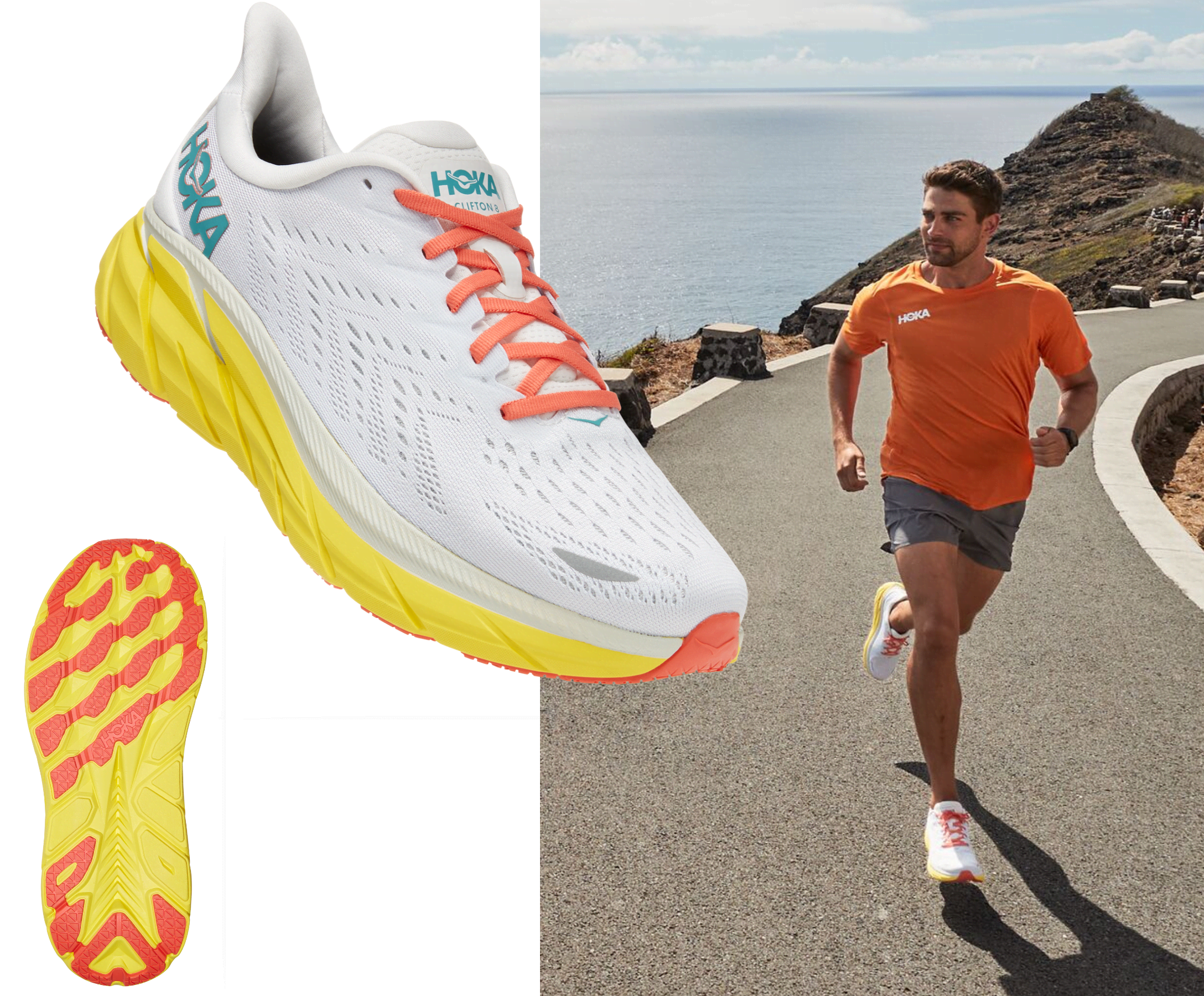
| Pros | Cons |
|
|
#Hoka Bondi 8
Price: $165
Best for: Cushioning
The Bondi is Hoka’s most cushioned road shoe with a downright beefy midsole.The series has been a long time favorite for those that like high stack rockered shoes. The eighth iteration of the Hoka Bondi remains as runners' beloved plush and cushy daily trainer that excels on easy days and recovery sessions.
Bondi 8 incorporates an even softer EVA foam and a completely new upper making it the roomiest, most versatile and softest Bondi yet.With its humongous foam, your foot will find itself in a very comfy position. On top of this, it will allow you to move with precision, thanks to its highly stable ride.

| Pros | Cons |
|
|
Asics
Asics History and Origin
Asics was started by Kihachiro Onitsuka, as Onitsuka Co. Ltd. in 1949.Kihachiro Onitsuka began making basketball shoes in his living room in Kobe, Japan at that time. He soon expanded to running shoes, and his first pair, the Marathon Tabi, came out in 1953. His business grew, and in 1977, he merged it with two other companies and began selling footwear in the United States. He also changed the company’s name to Asics, an acronym for the Latin phrase “Anima Sana In Corpore Sano” (a sound mind in a sound body). From there, Asics went on a tear during the 80’s and early 90’s with innovative “jogging shoes” from the Tarther to the Nevada to the Gel Saga. All of these shoes catered toward making the runner more comfortable through pronation support, stabilization, and shock absorption.
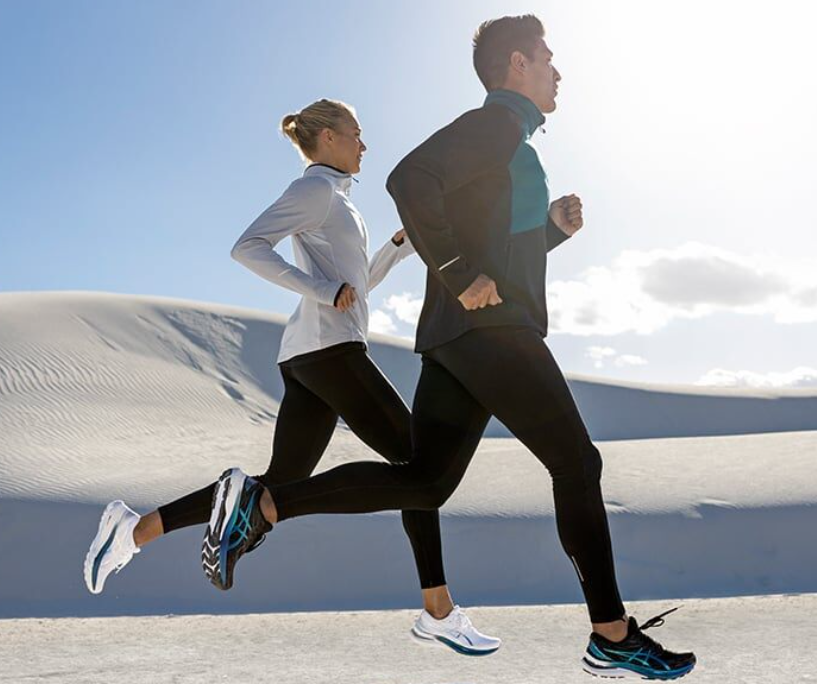
However, all these technological improvements truly came together when Asics released the Gel-Kayano trainer in 1993. Named after its designer and inspired by the protective exterior and horns of a beetle, the Asics Gel-Kayano married all the technological improvements Asics had made thus far.The Gel-Kayano was a massive hit with runners and it immediately elevated Asics as a serious running company.
Asics running shoes are known for their comfortable fit and support, making them a favorite among casual and distance runners alike.What’s more, Asics conducts rigorous product testing to ensure consistency and quality.Over the years, the company has developed a variety of unique running shoe models to accommodate different conditions and ensure athletes have a comfortable running experience.
Where to Buy Asics Shoes Cheapest?
ASICS(up to 2% super cash back)
Foot Locker(4% super cash back)
StockX(up to 4% super cash back)
Academy Sports + Outdoors(1% super cash back)
Nordstrom Rack(2% super cash back)
2 Best Asics Running Shoes
#ASICS GEL-Kayano 29
Price: $160
Best for: Stability
The Kayano is the top tier stability offering from Asics. It is the first to receive the latest and greatest technology Asics offers.It is also the most luxurious everyday training shoe from Asics. aimed at the pronating runner.It is synonymous with performance, comfort and stability.
The latest version—the Gel Kayano 29— maintains its position as a top model thanks to the same shock-absorbing GEL technology and reliable stability features as generations past. Gel-Kayano 29 features a lighter and more durable midsole, improved cushioning, and a shift towards sustainability, as well as a more comfortable fit that will help you run longer. Several of these features have been made possible through a total rework of ASICS' stability system, which combines numerous ASICS technologies from previous models to reduce weight and provide runners with a smoother ride.A new engineered mesh upper creates a sock-like, snug, and secure fit throughout. A well-integrated medial post and extended medial external heel counter provide a higher level of medial guidance/stability for those that want it. T
| Pros | Cons |
|
|
#ASICS GEL-Nimbus 24
Price: $119.95
Best for: Everyday Training
The ASICS Gel Nimbus has been a staple amongst runners since the late nineties.The Asics Gel Nimbus 24 is the newest model in the Nimbus lineup. Nimbus 24 is now one of the lightest, bounciest max-cushioned trainers on the market and it’s definitely worth upgrading to the Nimbus 24, even if you have the Nimbus 23.It’s a long-distance running shoe that offers maximum cushioning and bounce, thanks to a range of ASICS performance technology. From your first stride to your last, the lightweight cushioning and new improved fit provide lasting comfort you can rely on, making this the leading cushioning running shoe for neutral runners.If you’re looking to conquer your first 5k, train for longer distances or just have fun with running, this trainer offers comfort, cushioning and support.
| Pros | Cons |
|
|
Mizuno
Mizuno History and Origin
Mizuno is a Japanese foot and sportswear company that that dates back to 1906 when two brothers, Rihachi and Rizo Mizuno, delved into a journey of developing industry-leading sporting products. The shop sold Western sundries, including baseballs, and then in 1907 began to sell order-made athletic wear. In 1910 the shop moved to Umeda-Shinmichi and its name was changed to Mizuno Shop.During the 1920s, Mizuno supported the Olympic games and began to expand the operations of his company. In 1927, the company started manufacturing ski equipment; by 1933, Mizuno engaged in the manufacture of golf equipment. Mizuno opened a small factory based near Osaka, Japan, in 1934 for making baseball bats, balls, and uniforms, as well as for manufacturing golf clubs and skis. The company continued to expand into other areas of sports and began manufacturing tennis equipment in 1943.By the mid-1900s, Mizuno was once again at the forefront of the sporting goods industry, supporting the 1964 Olympics and the Sapporo Winter Olympics in 1972.
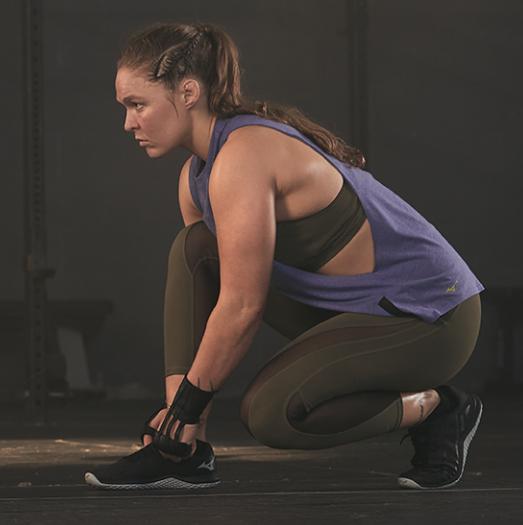
It’s among the most popular brands of the running shoe industry with innovative technologies that provide an especially responsive ride while running with their shoes.Having been a forerunner of several technologies, Mizuno introduced their patented Mizuno Wave technology. With such a game-changing technology, their shoe models would later win several coveted awards, including the Runners World awards in 2002, 2004, and 2006.
With some of the most popular running shoes on the market every year, Mizuno is a great brand for beginners and experts alike. From the shoes that soak up most of your training miles to the race-day models you bust out a few times a year, the best Mizuno running shoes will help you reach your goals.
Where to Buy Mizuno Shoes Cheapest?
Academy Sports + Outdoors(1% super cash back)
Holabird Sports(5% super cash back)
2 Best Mizuno Running Shoes
#Mizuno Wave Rider 26
Price: $140
Best for: Everyday Training
The Wave Rider has long been the neutral do-it-all shoe in Mizuno’s lineup.The Mizuno Wave Rider is a high-mileage trainer that makes minor changes to create a softer ride than its predecessor. The Wave Rider continues to be Mizuno's Go-To Shoe, suitable for both training runs and long races.
The Mizuno Wave Rider 26 is as consistent and comfortable as they come, which is exactly what you need from an everyday running shoe.The new jacquard mesh upper is light, breathable and hugs your foot in all the right places as you tick off the miles. Both the upper and outsole are durable enough to last through daily miles and light enough to wear on race day.The Wave Rider 26 features Mizuno Enerzy foam for a cushioned, bouncy ride and smooth transitions. Designers paired the Enerzy foam with a bio-based wave plate embedded in the midsole that helps to support your foot and propel you forward.

| Pros | Cons |
|
|
#Mizuno Wave Horizon 6
Price: $120
Best for: Daily Trainers and Overpronators
The Mizuno Wave Horizon is a popular choice amongst runners who seek extra support, stability and cushioning.The Mizuno Wave Horizon 6 offers the same stable support as previous versions with a few key updates.
The Horizon 6 updates include using a Mizuno Enerzy Core midsole to create an even softer and responsive ride as well as dropping 0.4 ounces. Integrations of stability throughout include usage of U4ic midsole for a dual density platform, a dynamic structured wave using a rubberized foam for structure, and a solid platform underfoot to lever from. The Horizon 6 features a Foam Wave that both gives the shoe a floating feeling and provides stability. To do that, Mizuno changed the shape of the waves on each side of the shoe. The rectangular waves on the medial side (instep) compress less than the rounded waves on the lateral side (outside), creating the stability overpronators need.

| Pros | Cons |
|
|
Saucony vs. Hoka vs. Asics vs. Mizuno Feature Comparison
1.Durability
Compared to its features and price, the durability of a shoe will help you determine if you are getting value for your money. Cheap is said to be expensive, but you should be careful to avoid paying too much for a shoe that doesn’t deliver much.
Saucony - Saucony is known for having durable shoes thanks to the rubber outsoles. If you want an estimate of how many miles you can get in them, you’re probably looking at around 400 miles, which is right in the middle of the typical 300-500 miles for running shoes.
Hoka - HOKA running shoes may last you closer to 400 miles per pair.With that said, HOKA running shoes often perform best on the trails, so the outsole can wear down quickly on the roads. If you’re going to be doing a lot of road running in HOKA running shoes, buy road-specific models because the durometer of the rubber on the sole will better handle the friction and wear of the road.
Asics - When it comes to Asics, their shoes have about 450 – 550 miles of performance. The brand has struggled with the challenge of making the shoes durable while remaining lightweight.
Mizuno - While Mizuno’s running shoes are characteristically light, they’re surprisingly durable and resilient, especially in the midsole region where the Mizuno’s Wave Plate Technology kicks in.Ideally, you should expect the average Mizuno shoes to last you up to about 400 to 500 miles. This means that a casual runner who workouts 3-4 times a week should expect it to last about 6 months.
Determining when to replace running shoes, of course, all depends on your gait, weight, and whether you run mostly on trail or road.In addition to these runner-specific factors, there are also qualities of the running shoe itself that influence durability, namely the materials used and the quality of construction.
2.Cushioning
Saucony - Saucony is known for having cushioning that holds up mile after mile and doesn’t break down. Since their cushioning is closer to your foot than other running shoe brands, you might want to try Saucony if you want a super comfortable ride.Some of Saucony’s best-cushioned running shoes include the Triumph and Hurricane. Saucony has transitioned most of their shoes to PWRRUN technology, which they promote as a better than the standard EVA foam used by most brands.
Hoka - HOKA running shoes are known to be plush and to provide “marshmallow softness.” This cloud-like cushioning is due to PROFLY technology and molded EVA foam.
Although people usually associate HOKA with just the thickest maximalist running shoes, they actually offer three levels of cushioning.The shoes are surprisingly lightweight despite their generous amount of cushioning.
Asics - Asics uses Flytefoam technology to provide responsiveness and bounce back with every stride. Flytefoam is much lighter and resilient compared to the EVA foam used in past models. It is categorized into Flytefoam Propel, which gives more energy return, and Flytefoam Lyte.They also use Gel technology which is their patented and signature cushioning style. The fluid placed in the shoes’ interior provides structure to the shoe and supports the foot cushioning you from impact.
Mizuno - Mizuno’s wave plate technology is one of their shoes’ best assets because it delivers a lot. One of the key qualities it gives to the shoes is superior cushioning. There are so many things that Mizuno’s wave technology does ,from providing shock absorption to giving you a close-to-ground sensation to providing you with plenty of cushion.While Mizuno’s Wave Plate technology helps to ease impact, it can make the shoe feel a little more on the firm side.
3.Shoe Construction
Upper
Saucony - Saucony’s new overlay tech is FlexFILM.This is melded to the upper. It helps everything weigh less and makes it less likely that you’ll deal with irritations like blisters.For some models, Saucony has introduced a new upper construction called FORMFIT. It’s a combination of seamless upper and FlexFILM that offers a unique fit to cradle your foot.
Hoka - Hoka features traditional lacing and a seamless upper, which is the norm for running shoes these days.A seamless upper is one piece of material molded into a shoe shape. It eliminates the need for stitching panels together. This not only reduces weight, but adds comfort with a softer feel when you put your foot in the shoe.
Asics - Asics'smost running shoes use a synthetic mesh fabric, although sometimes fabric, knit, leather and plastics are incorporated.The upper of a running shoe uses a collection of technologies to offer a lightweight, breathable and supportive structure to keep your foot in place.
Mizuno - Mizuno uses AirMesh engineered mesh in their regular uppers, which is both lightweight and breathable. However, some of their shoe models boast Waveknit upper. The Wavenit is tighter than the mesh and provides runners with proper foot and toe movement. Mizuno also features the Dynamotion Fit Technology that allows the shoe to move with your foot providing unmatched support for every stride.
Midsole
Saucony - Saucony is starting to incorporate a new technology called PWRRUN+ in their latest models, which is an additional layer of cushioning that is closer to your foot, making it more comfortable, especially for long runs.This cushioning is supposed to give you better energy return and is designed to avoid breaking down with usage.
Hoka - Hoka is known for its extremely cushioned midsoles, although they do have a variety of thicknesses. The idea is to help with shock absorption and promote comfort, especially on very long runs.The company calls its midsole the “bucket seat” because it functions like the bucket seat of a race car. It cushions the heel and foot without posts or guide rails.
Asics - Asics uses small pockets of gel in the forefoot and heel of the midsole in most of their shoes to reduce heel strike and create a smooth transition. Asics Flytefoam is similar to Brooks’ DNA Amp midsole, but gives a little less energy return, at about 60-65%, which is still excellent. For the same effect with less weight, Asics shoes with Flytefoam light are about half the industry weight standard but still provide a long foam life. SpEVA is also a more responsive version of EVA, giving you a higher energy return with each step.
Mizuno - Mizuno is most well-known for their midsole, which features proprietary Wave Plate technology.Shaped like the ocean waves, the Wave Plate helps absorb impact and disperse the shock horizontally, protecting your foot joints from getting injured. You will find various wave technologies on Mizuno running shoes, including Cloud Wave, Infinity Wave, Fan-Shaped Wave, Parallel Wave, and Double Fan-Shaped Wave.
Ousole
Saucony - Saucony often uses XT-900 carbon rubber in its outsoles. This delivers ideal traction while making the shoe durable.
Hoka - Since Hoka is known for its springy foam, it’s no surprise that it has rubberized foam outsoles that are responsive to fast movements. They are also known for having oversize outsoles due to the rocker bottom.
Asics - Asics uses a traditional rubber outsole in their shoes. They use the Trusstic system that creates a gap between the forefoot and rearfoot to prevent twisting. The gaps are made of AHAR+ or AHAR. This is a short form for ASICS High Abrasion Resistance Rubber. Besides superior cushioning, this rubber also gives an excellent grip on both dry and wet surfaces.
Mizuno - Mizuno artfully combines a carbon rubber compound with state-of-the-art technology to create solid and highly supportive outsoles. These outsoles provide exceptional surface grip and superior ride quality. They boast excellent energy return on every stride and go an extra mile to provide great landing on any surface. Some of their shoes’ outsoles come with Dynamotion Groove or D-Flex Groove for increased flexibility and coordinated motion.
4.Stability
Saucony - Saucony has been transitioning to less aggressive stability tools, ensuring the shoe is not over correcting or doing the work for you.They utilize a medial post (which is a device within the midsole that is firmer) to help provide control and a TPU heel plate which again makes the rides slightly firmer and adds control. Thanks to the cushioning, you don’t so much notice the stiffness and reap the benefits.
Hoka - HOKA doesn’t offer quite as many stability shoes, but those that are designed to provide more support use a J-Frame technology and a firmer foam on the medial side of the foot to prevent excessive pronation (rolling inward).The J-Frame technology of HOKA provides an extended support with a firmer foam on the medial side where the foot typically rolls inward. So, it does not overcorrect the gait, but supports for natural stride.
Asics - Asics shoes provide stability through a dual density midsole system called Duomax, which enhances support and stability. That, along with the external heel clutch allow the foot to continue its natural movement while running.
Mizuno - Features various Wave heights, delivering excellent cushioning and stability. Designed for runners that need certain level of support in order to anticipate tendency of over-pronation. Instead of blocking the movement, the specific fanshape contracts and expand following the runner's natural
5.Fit and Sizing
Saucony - True to size, but some are for a more narrow foot.Their often lower heel to toe drop and cushion make them a favorite of distance runners, who find the decreased drop helps with issues like IT Band Syndrome and ensures they are working on hip strength over a shoe correcting a weakness.
Hoka - The Hoka shoes fit perfectly and are true to size. In addition, it doesn't feel too tight in the midfoot or toe box area. Some models are definitely a little more narrow than others, as with most brands.In fact, they have been working on increasing the toebox in newer models. They also have a shoe finder quiz to help you get in to the right model.
Asics - Asics shoes have a more snug fit, particularly in the heel and midfoot. An external heel clutch delivers targeted fit and support, while the Gel technology allows for foot movement in various directions as the foot transitions, reducing heel strike.While Asics also features a shoe fit guide, it takes a little sleuthing to find.
Mizuno - Mizuno running shoes are naturally narrow and usually have a slimmer fit. While their upper is stretchy, some wearers find them restrictive, especially for shoes made from the Waveknit fabric.While the Mizuno products scream authenticity and offer great value, they don’t always provide a perfect fit, especially for big and wide-footed runners.
6.Pricing
When buying a shoe, you want to ensure that you spend your money on a pair that will deliver what you need, should it be cushioning, stability, energy return, ideal fit, or a perfect mix of all this. Therefore, you might have to spend a bit more to ensure that you get value for money.
Saucony - Saucony’s running shoes range between $110 – $170. Specialty items with more features will increase price.
Hoka - HOKA’s start at a slightly higher price at $120 to $250.
Asics - Asics prices range between $110 to $160.The most popular models for Asics are around $150.
Mizuno - Mizuno running shoes are slightly more expensive.Their shoes range from $120 to $170 on their own website.
The four brands have averagely priced running shoes. The variation in their prices will come in depending on the shoe model you want to buy from either company.
Conclusion: Which Brand is Best for You?
It all comes down to personal preference. The the fit of the shoe is more important than brand.The best pair of running shoes does not compromise in durability, comfort, cushioning and it is well priced. Saucony,Hoka,Mizuno and Asics have their defining technologies, so it just depends on what kind of technology you want.
If you’re looking for new technology and a sleek design, go with Saucony. And if you need track or cross-country spikes, Saucony’s your brand.
If you love Asics’s gel technology and like a tighter fit, it’s the better shoe for you.
If you need more cushioning, Hoka is the clear choice. They are also made so that you can put orthotics in their shoes if you have a need for that.
If you need lightweight shoes, I highly recommend Mizuno.And if you want the Wave technology that will help spread the force as you pound the pavement, you’re only going to get that with Mizuno.
In any case, you’ll have an excellent running shoe no matter what brand you choose.If you’re able, go and try on a couple pairs at a running store and get the opinion of the professionals there on what’s going to be the best fit for you. You can also purchase shoes online, but make sure that you can return the shoes if they aren’t a great fit.
Asics vs. Brooks vs. New Balance vs. Saucony: Which Makes the Best Running Shoes?
Saucony Endorphin Speed 2 vs. Pro 2 vs. Shift 2: Differences and Reviews 2024
Ryka vs. Nike vs. Asics vs. Hoka Walking Shoes: Which is the Best for Women to Wear All Day?
HOKA vs. Brooks vs. On Cloud vs. New Balance: Which Brand is Best for You?
Top 8 Best Hoka Shoes for Nurses with Plantar Fasciitis for Walking or Standing 2024
Ryka vs. Nike vs. Asics vs. Hoka Walking Shoes: Which is the Best for Women to Wear All Day?
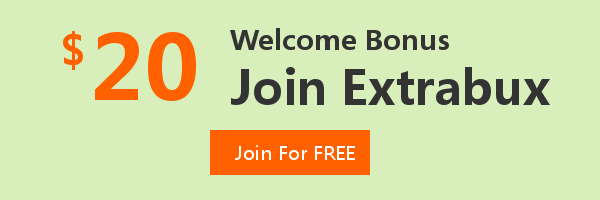
Extrabux is an international cashback shopping site, offering up to 30% cashback from 10,000+ Stores!
24S, SSENSE, MATCHESFASHION.COM, Shopbop, NET-A-PORTER, FARFETCH, YOOX, Eastbay, End Clothing, Macys, Neiman Marcus, Saks Fifth Avenue, Saks OFF 5TH, Bergdorf Goodman, Selfridges, Bloomingdales, Coggles, Harrods, Kohl's, Urban Outfitters, ASOS, Missguided, etc.
Join to get $20 welcome bonus now! (How does Welcome Bonus work?)
Recommendation
-
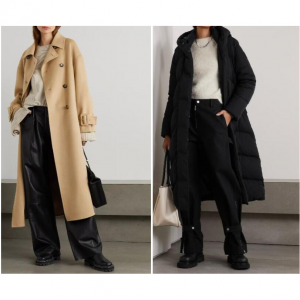
10 Best & Stylish Winter Coats for Women on NET-A-PORTER in 2024
-

Top & Best 12 Sneaker Apps/Websites for Raffles, Releases & Restocks in 2024
-

7 Best Gift Card Exchange Sites - Buy, Sell and Trade Discount Gift Card Safely and Instanly!
-

Top 9 Professional Skincare Brands for Licensed Estheticians 2024
-

13 Best Luxury Online Shopping Sites with Highest Cashback in 2024 (Coupon Code+Sale+14% Cashback)
Up to 14% Cashback!


